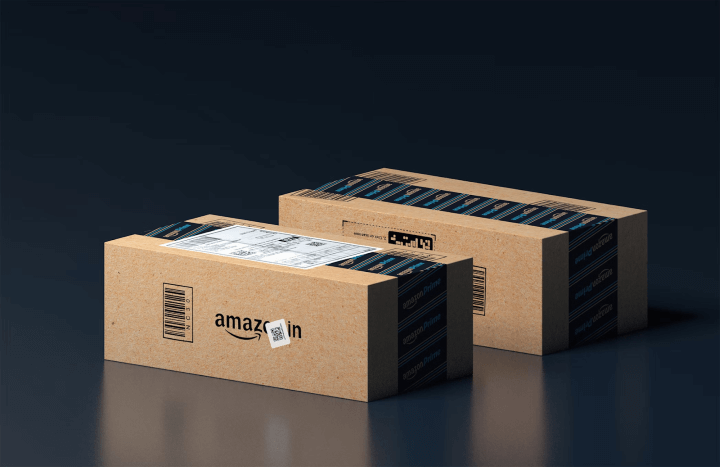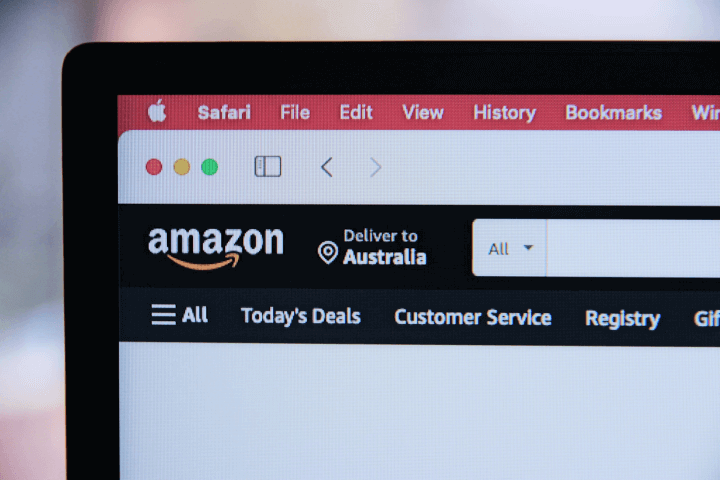Simple Steps on Amazon Reviews Scraping

Ever wondered how you can quickly collect and analyze customer feedback on Amazon? Whether you’re a developer, marketer, or just a curious tech enthusiast, scraping reviews can shed light on insights and trends otherwise hidden. Today, I’ll take you through the simple yet not-so-obvious steps to efficiently extract this valuable data. Get ready to study those Amazon reviews like never before!
What is Amazon Reviews Scraping?

To scrape Amazon reviews, you can use special software tools (scrapers) that automatically collect data from product pages. This technique allows you to extract large volumes of feedback data, which includes ratings, review texts, reviewer profiles, and timestamps.
Eventually, businesses need these data points to
- gauge public sentiment,
- analyze customer satisfaction,
- and enhance their products or services.
Review scraping is indeed of much value. It can provide insights into consumer behavior patterns, highlight areas for product improvement, and help in competitor analysis. With over 310 million active customer Amazon accounts, the insights derived help to alter marketing strategies and boost product development.
How Does It Work?
To start scraping, one should deploy bots programmed to navigate product pages and retrieve the specified data elements. These bots can come in two forms:
- Web scraping with Python Amazon using libraries such as Beautiful Soup;
- More advanced automated tools that handle large-scale data extraction.
The collection process begins when the bot sends requests to product URLs and parses the HTML content to extract relevant data points such as review texts, ratings, and dates. The complexity can arise from managing pagination, as products can have thousands of reviews spread over multiple pages.
When I discuss scraping, I should highlight one more valuable tool — proxies. They are crucial because they allow bots to make requests from different IP addresses to avoid detection and potential blocking by Amazon’s anti-scraping technologies. Furthermore, the process must respect rate limits imposed by the platform to prevent undue load on its servers. This allows for an ethical data collection practice that avoids legal repercussions.
However, not all proxies are equally suitable for scraping. For this article, I’ve hand-tested 50+ services to highlight the 15 best proxy options.
Amazon Reviews Scraping — Main Types

Scraping Amazon is a popular way to gather customer feedback. The information is then used to improve product offerings and customer service. You can perform it in two ways: with custom-built scrapers and Amazon review API software. Let me explain them in more detail.
Custom-Built Scrapers
You can scrape Amazon reviews Python with Scrapy, Beautiful Soup, or Selenium libraries. The flexible option allows you to adjust custom scrapers to specific requirements, such as gathering information from particular product categories or filtering by customer ratings.
Note that these tools require a more hands-on approach to manage and update the scraper as Amazon’s layout changes. They often involve handling pagination to access all available reviews and implementing techniques to avoid detection by the platform’s anti-scraping measures, such as CAPTCHAs or IP bans.
Even though web scraping with Python Amazon is the most popular way, many alternatives remain. Please check this review for the 8 best programming languages to collect data.
With APIs
Several third-party services offer Amazon review API software. Their benefit is that they can handle much of the complexity behind the scenes. They generally provide more stability and ease of use than custom scrapers, as they are maintained by professionals who ensure they adapt to changes on Amazon’s end.
Amazon reviews scraper API software commonly includes features like proxy management and can efficiently handle large volumes of information. However, it comes at a cost and may have usage limits depending on the subscription plan.
Storing the Data

Now that you know how to scrape Amazon reviews, you should decide how to store them efficiently to ensure easy analysis and retrieval. Data storage methods vary based on the scale of the data collection operation, the frequency of access needed, and the intended analysis methods. These are some popular options, from minor to advanced types.
- Local Storage
This method is suitable for smaller-scale scraping tasks or personal projects. You can store information locally in files like CSV, JSON, or Excel if that’s your case. Most extraction tools support these formats, which can be easily imported into data analysis software. For example, web scraping with Python Amazon allows quick saving of scraped info to CSV files, which are then ready for further processing or analysis.
- Database Storage
Using a database is preferable for more robust data handling, especially for large volumes or complex queries on the collected information. Relational databases like MySQL, PostgreSQL, or NoSQL databases like MongoDB are popular choices. They offer robust data management and querying capabilities, which allow efficient handling of large datasets.
- Cloud Storage
Cloud storage solutions like Amazon S3, Google Cloud Storage, or Microsoft Azure Blob Storage are the best solutions when scalability and access from multiple locations are required. These services offer high durability, availability, and scalability. They are handy for large-scale web scraping, where info must be accessible across different geographic locations.
- Data Lakes
But how do you export Amazon reviews if you conduct scraping at an immense scale? Data lakes are effective in this case. They store information in its native format and are highly scalable, thus supporting big data technologies and real-time analytics.
The Legality of Scraping Amazon Reviews

Once you start scraping Amazon customer reviews, you should know that its legality is affected by several factors, including:
- geographical laws,
- methods used,
- and the purpose of data use.
Generally, scraping publicly available information from websites like Amazon is legally permissible under U.S. law. It is especially significant in light of the court decision in the case of hiQ Labs, Inc. versus LinkedIn Corp., which concluded that collecting publicly available information likely won’t breach the Computer Fraud and Abuse Act.
However, Amazon also has terms of service that users must agree to. More specifically, these restrict automated access to their services without permission. The platform’s terms specify that you cannot use data mining, robots, or similar data-gathering and extraction tools. As such, while scraping might not be illegal per se, it can constitute a breach of contract with Amazon if done against their terms.
Amazon Scraping Tools

These tools simulate human browsing behaviors to navigate Amazon’s product pages and gather specific data points. But just like anything, they have their pros and cons. Here’s what you should note.
Pros of Data Collection Tools:
- Efficiency: These tools can gather information faster than manual collection methods.
- Accuracy: Automated tools reduce human errors in data collection to ensure more reliable information.
- Scalability: They can simultaneously handle the extraction from thousands of product pages, making them ideal for large-scale info analysis projects.
Cons of Data Collection Tools:
- Complexity: These tools can require technical expertise, particularly if customizations or adaptations to Amazon’s changing website structure are needed.
- Legal and Ethical Considerations: As discussed, scraping information without adherence to terms of service or legal guidelines can lead to potential legal issues.
- Cost: While some open-source tools are available, most robust scraping tools come at a cost. It mainly concerns those that offer advanced features like proxy management and CAPTCHA-solving capabilities.
How to Use Scraping Tools
It’s not as difficult as it may seem. Below, I provide a clear plan for scraping in five simple steps.
- Determine what specific data you need to extract, such as product prices, ratings, or customer reviews.
- Choose a tool that fits your technical capability and budget. Some tools require programming knowledge, while others offer a more user-friendly graphical interface.
- Configure the tool with the proper parameters, like the URLs of the Amazon pages you wish to scrape.
- Run the tool and ensure it complies with the platform’s policies to avoid blocking or legal issues.
- Once the data is collected, it’s time to learn how to export Amazon reviews and store them in a format that supports your analysis needs.
You can also study these web scraping techniques to gain more advanced knowledge of the process.
Be Aware: Avoid Getting Blocked by Amazon

Scraping reviews from Amazon can provide invaluable insights but comes with legal risks. Your task is to avoid getting blocked by anti-scraping mechanisms. Here are some practical strategies to help you stay off the radar.
- Use Proxies
Proxies allow you to disguise the origin of your requests by pretending they come from different IP addresses. Rotating residential proxies are particularly effective as they mimic legitimate user traffic better than data center proxies.
- Manage Request Rates
The site monitors the rate of incoming requests to detect scraping bots. Thus, you should space out your requests. Implement random delays between requests to mimic human browsing patterns and not trigger anti-scraping defenses.
- Use Realistic User Agents
A user agent string helps Amazon identify the browser and operating system that makes the request. Therefore, you should avoid default or outdated user agent strings that can quickly be flagged as bot traffic.
- Handle CAPTCHAs
CAPTCHA-solving services or manual intervention strategies can help keep your data collection smooth. Some advanced scraping tools come with built-in CAPTCHA-solving capabilities to automate this process.
- Respect Rate Limits and Avoid Peak Hours
Don’t scrape during Amazon’s peak traffic hours to reduce the risk of being flagged. Also, respect rate limits by setting a threshold for maximum requests within a given period.
Final Thoughts
Scraping of reviews on Amazon will bring you a treasure trove of data ripe for analysis. The information collected will help you better understand market trends and consumer sentiments. As you harness these insights, remember about the legislature behind your actions, and stay thoughtful. Intelligent, ethical scraping can enrich your projects and preserve the integrity of the web ecosystem.
FAQ
Scrape Amazon reviews for deep insights into customer satisfaction and product performance. This information helps businesses enhance their offerings and gain a competitive edge.
Amazon’s terms prohibit automated access, including scraping, without permission. The violation of the rules could lead to legal and access issues.
Scrape reviews periodically to keep data fresh, but balance it with respect to Amazon’s policies to avoid blocking. The frequency depends on the product’s sales volume and review activity.
You can use web scraping libraries like Beautiful Soup, Scrapy, or commercial scraping tools to manage complex needs.
Yes, analyzing scraped reviews can reveal customer preferences and pain points. This data helps adjust product descriptions, improve features, and target customer needs.
Scraping can be ethical if done transparently, respecting user privacy and complying with legal standards. Thus, ensure your activities do not harm Amazon’s services or user experience.
To import reviews from Amazon, you should adhere to legal and ethical standards, such as Amazon’s terms of service and data protection laws. To avoid service disruptions, use legitimate tools that respect rate limits.
